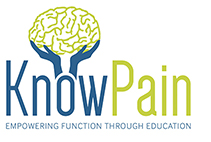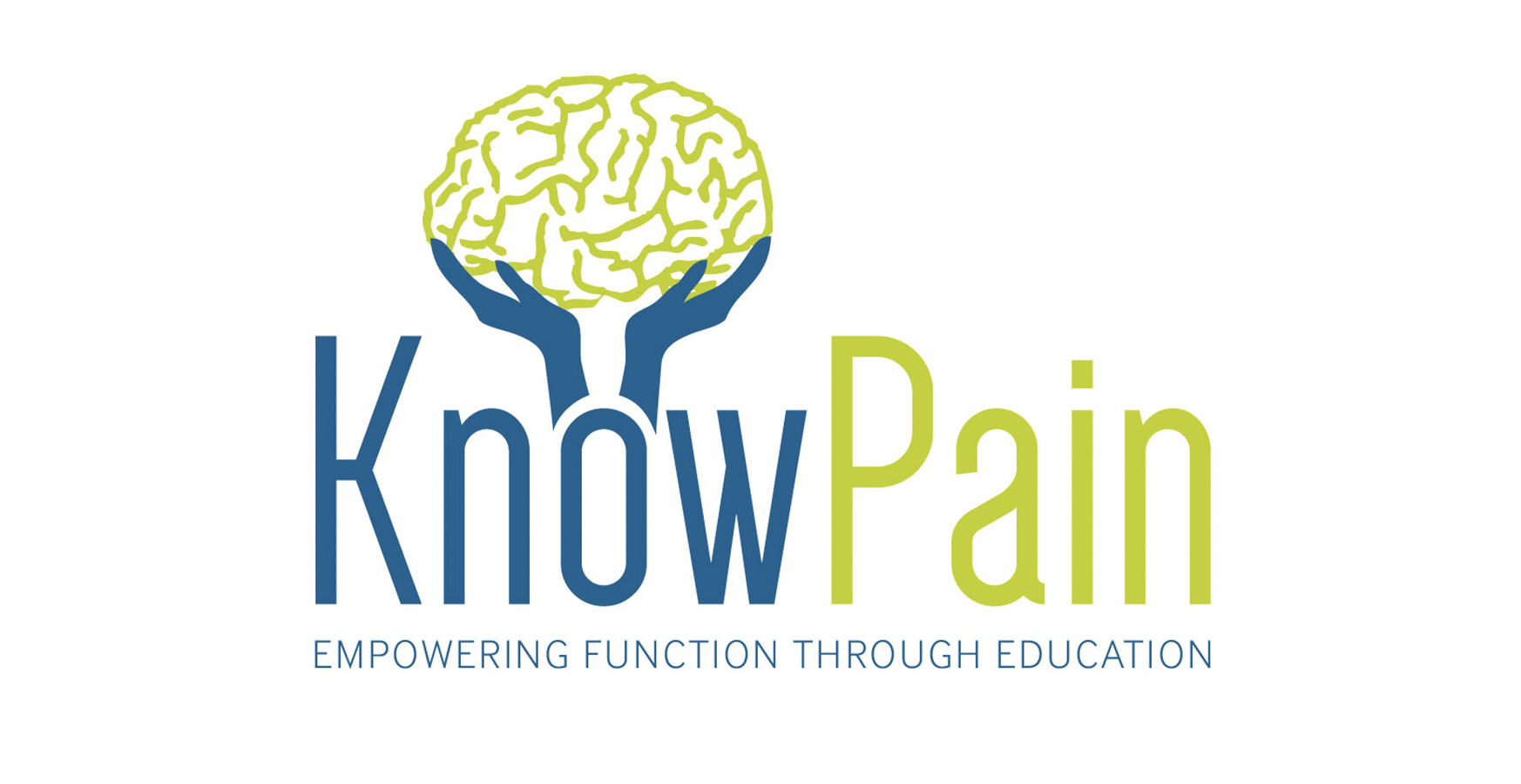As the cult movie Trainspotting once taught us, life is about choices. Our modern world is full of them. What colour sofa to buy? How big should my TV be? Tea or coffee? Whether to change the bed clothes today? Chicken or fish? The list is endless!
Amid the myriad of choices we encounter, the decision to increase our activity level is all too often overlooked. It’s easy to see why this might be. For millions of people, long hours at the office, family responsibilities and countless deadlines all take precedence over regular physical activity. Some of this has to do with the modern day perception of what “exercise” is. Much of it has to do with how our societies have embraced technology over movement. For many, exercise equates to pounding the pavements with sweat dripping from every pore. I’ve lost count of how many times people recoil at the thought of heading to a gym.
If we are to stand any chance of reducing the global epidemic of persistent diseases that relate to inactivity, we need to change people’s perception about movement and make activity a normal, fun and engaging part of everyday life. This is why the work of people like Dr Mike Evans (http://www.evanshealthlab.com) and Ann Gates (http://www.exercise-works.org) is so important.
Dr Mike has launched a much needed campaign called Make Your Day Harder. It’s a simple message. As societies we sit far too much. We need to find little, helpful ways of moving more often. This needn’t involve a triathlon, just something small that means something to you. Check out the Make Your Day Harder website (http://www.makeyourdayharder.com ) for further information and some typically engaging and creative ideas from Dr Mike.
Speaking of engaging and creative ways to encourage people to move more here’s a superb video from the Stockholm subway:
During my recent trip to Singapore, I had the great pleasure of working with the staff at the Khoo Teck Puat Hospital (https://www.ktph.com.sg/main/home). Prior to running my Know Pain course in Singapore, I was shown around the hospital and was hugely impressed by their innovative use of simple, positive health messages to encourage people to be more active. Here’s a few examples:
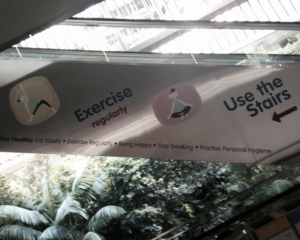
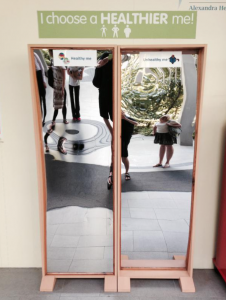
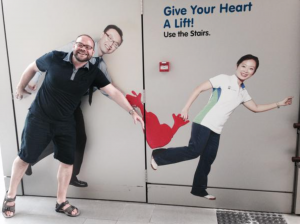
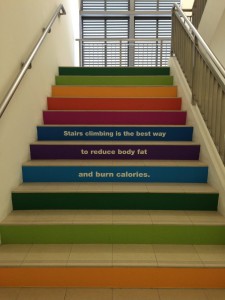
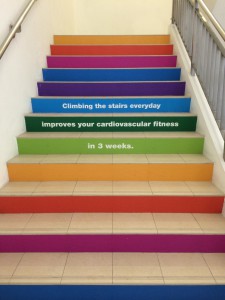
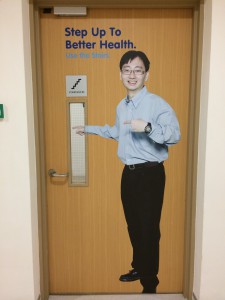
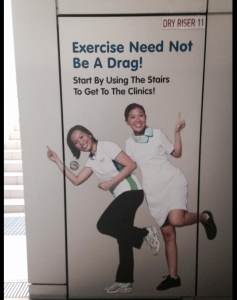
As you can see, it doesn’t take much to get the right message across. So ask yourself: How could you do something similar in both your home and workplace?
I really do wish that I’d considered my choice of footwear for that last photo. Oh well, give me an affordable, positive health message over a mild fashion faux pas any day!
